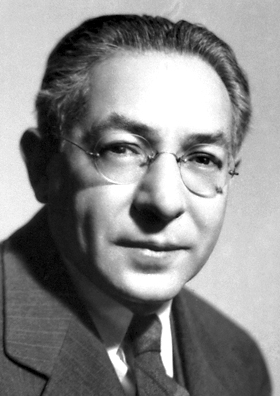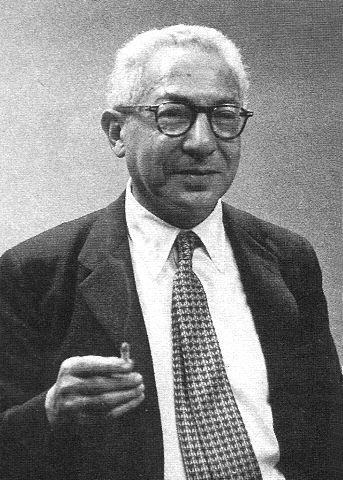<Back to Index>
- Physicist Isidor Isaac Rabi, 1898
- Novelist Booth Tarkington, 1869
- Head of Government of the Kingdom of Italy Benito Amilcare Andrea Mussolini, 1883
PAGE SPONSOR


Isidor Isaac Rabi (29 July 1898 – 11 January 1988) was a Galician-born American physicist and Nobel laureate recognized in 1944 for his discovery of nuclear magnetic resonance.
Rabi was born into a traditional Jewish family in Rymanów, Galicia, Austria-Hungary (now Poland), and was brought to the United States as a child the following year. He was awarded a Bachelor of Science in Chemistry degree from Cornell University in 1919, continuing his studies at Columbia University and received his Ph.D. in 1927. A fellowship enabled him to spend the next two years in Europe working with such eminent physicists as Niels Bohr, Werner Heisenberg, Wolfgang Pauli and Otto Stern. He then joined the Columbia faculty and never left.
In 1930 Rabi conducted investigations into the nature of the force binding protons to atomic nuclei. This research eventually led to the creation of the molecular beam magnetic resonance detection method, for which he was awarded the Nobel Prize for Physics in 1944.
In 1940 he was granted leave from Columbia to work as Associate Director of the Radiation Laboratory at the Massachusetts Institute of Technology on the development of radar and the atomic bomb. Some say that he reluctantly agreed to serve as a visiting consultant who would come and go from Los Alamos, where he was one of the very few exceptions to the strict security rules there. General Leslie Groves made a special effort to bring Rabi, who had been a student with Oppenheimer and maintained a close and mutually respectful relationship, out to Los Alamos for the days leading up to the Trinity test so that he could help Oppenheimer maintain his sanity under such intense pressure. The scientists working on Trinity set up a betting pool for the results of the test, with predictions ranging from total dud to 45 kilotons of TNT equivalent (KT).
Rabi's guess of 18 KT proved to be the closest to the actual yield of
18.6 KT, despite his having made the guess by default (it was the only
choice left by the time he arrived), and he won the pool. After
the war he continued his research, which contributed to the inventions
of the laser and the atomic clock. He was also one of the founders of
both Brookhaven National Laboratory and CERN, and served as U.S. President Harry S. Truman's second Science Advisor. Rabi testified on Oppenheimer's behalf at a controversial United States Atomic Energy Commission hearing in 1954 that ultimately led to Oppenheimer being stripped of his security clearance. Rabi chaired Columbia's physics department from 1945 to 1949, a period during which it was home to two Nobel Laureates (Rabi and Enrico Fermi) and eleven future laureates, including seven faculty (Polykarp Kusch, Willis Lamb, Maria Goeppert-Mayer, James Rainwater, Norman Ramsey, Charles Townes and Hideki Yukawa), a research scientist (Aage Bohr), a visiting professor (Hans Bethe), a doctoral student (Leon Lederman) and an undergrad (Leon Cooper). When
Columbia created the rank of University Professor in 1964, Rabi was the
first to receive such a chair. He retired from teaching in 1967 but
remained active in the department and held the title of University
Professor Emeritus and Special Lecturer until his death on 11 January
1988. Rabi
served as the U.S. Representative to the NATO Science Committee at the
time the term 'Software Engineering' was coined. While serving in that
capacity, he bemoaned the fact that many large software projects were
delayed. This prompted several discussions that led to the formation of
a Study Group that organized the first conference on Software
Engineering. He famously remarked that "the world would be better without an Edward Teller." He is also known for asking regarding the muon, "Who ordered that?" Rabi is the recipient of The International Center in New York's Award of Excellence as well as the 1967 Atoms for Peace Award.